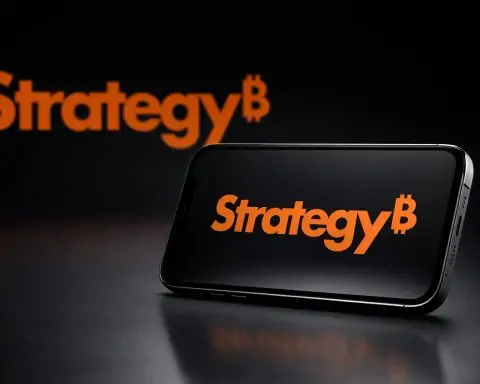Opendoor Technologies Inc. (NASDAQ: OPEN) continues to be one of 2025’s wildest rides on Wall Street. On 26 November 2025, the iBuying and real‑estate tech stock is trading around the $7.7–$7.8 level, modestly higher on the day and miles above its summer lows below $0.60. [1]
Today’s trade comes against a backdrop of fresh commentary on the company’s new CEO and his plan to “10X” the business, an ongoing afterglow from a special warrant dividend, and renewed focus on a $39 million investor settlement that underscores Opendoor’s risk profile. [2]
OPEN stock price on 26 November 2025
As of Wednesday, 26 November 2025:
- Share price: roughly $7.7–$7.8
- Intraday range: about $7.47 to $8.07
- Market cap: around $7.3–$7.4 billion
- 52‑week range: roughly $0.49 to $10.52
- 1‑year return: more than +260%
- 3‑month return: around +70% [3]
Opendoor has also been extremely volatile in November. A Motley Fool recap published on 23 November noted that the stock fell about 16.9% in a single week as investors briefly rotated out of high‑risk names, even though OPEN remained up more than 300% year to date at that point. [4]
In other words: today’s relatively calm move hides the fact that Opendoor is still trading like a speculative, momentum‑driven “cult stock” rather than a sleepy real‑estate name.
New CEO Kaz Nejatian’s 10X vision hits the spotlight
The major fresh narrative today is a widely‑syndicated Motley Fool piece titled “Here’s How Opendoor’s New CEO Plans to 10X the Business,” published this morning (26 November). [5]
Key takeaways from that article and recent disclosures:
- From penny‑stock territory to 10‑bagger: Opendoor’s share price bottomed below $0.60 in mid‑2025, to the point where management was considering a reverse split. Since then, the stock has rallied more than 10x from those lows. [6]
- Eric Jackson’s AI‑driven bull case: Hedge fund manager Eric Jackson publicly pitched Opendoor as a potential “100x” idea, arguing that its data trove could power AI‑based tools and that it stands as the last major scaled iBuyer. That thesis helped ignite the rally and contributed to the company’s “cult stock” status among retail investors. [7]
- New leadership from Shopify: In September, Opendoor hired former Shopify COO Kaz Nejatian as CEO, alongside bringing back co‑founders Keith Rabois and Eric Wu to the board, backed by a $40 million insider investment. The stock surged as much as 80% in a single session on that announcement. [8]
“Refounding” Opendoor as a software and AI company
In recent earnings commentary and interviews, Nejatian has described his plan as “refounding Opendoor as a software and AI company”, not just a home‑flipper. [9]
According to the latest coverage and Q3 disclosures:
- Since taking over, Nejatian has pushed through more than a dozen AI‑powered tools and products aimed at pricing homes more precisely, streamlining operations, and improving risk management. [10]
- Management says the number of homes Opendoor agreed to buy nearly doubled from mid‑September to the end of October, signalling a renewed appetite for scale after a cautious period. [11]
- The CEO wants to cut the average time a home stays on Opendoor’s books, reducing holding costs and smoothing earnings. [12]
- A core part of the roadmap is to hold operating expenses roughly flat while volumes grow, using automation and standardized processes to generate operating leverage. [13]
- Nejatian has publicly targeted net profitability by the end of 2026, a bold goal given recent losses. [14]
The tone of today’s “10X” article is cautiously optimistic: it highlights Nejatian’s ambition and product focus, but stresses that Opendoor remains unprofitable with significant execution risk, and that investors are still effectively betting on a turnaround in both the housing market and the company’s model. [15]
Warrant dividend and the new “KAZ” warrants keep volatility high
Another big story still reverberating through the stock this week is Opendoor’s special dividend of tradable stock warrants, which began trading just days ago.
On 21 November 2025, the company completed the previously announced special dividend in the form of three series of warrants:
- Series K (OPENW) – exercise price $9.00
- Series A (OPENL) – exercise price $13.00
- Series Z (OPENZ) – exercise price $17.00 [16]
According to the company’s press release:
- Record date: 18 November 2025, 5:00 p.m. New York time.
- Distribution ratio: For every 30 shares of common stock, eligible holders received one K, one A, and one Z warrant (fractions rounded down).
- Expiry: All three series are scheduled to expire on 20 November 2026, with potential early expiration if the stock trades above certain trigger levels (120% of each strike price) for at least 20 trading days in a 30‑day window. [17]
CEO Kaz Nejatian framed the warrant dividend as a structural way to align with shareholders, calling it a “statement of confidence” in the company’s plan and long‑term value rather than a cosmetic gesture. [18]
Early trading in OPENW, OPENL and OPENZ
A detailed Stocktwits News article on 25 November highlighted how the new warrants have added fuel to trading: [19]
- On Monday, OPEN shares closed almost 14% higher at $7.69 after gaining 9.6% on Friday, snapping a six‑session losing streak.
- All three warrants finished the day higher, with OPENZ (the highest‑strike warrant) jumping more than 27% in a single session.
- The piece characterizes the market as cautiously bullish but notes that retail sentiment on Stocktwits remains “neutral” overall, and points out that CNBC’s Jim Cramer has reiterated he is “not a believer until [Opendoor] makes money.”
This combination of high‑beta common stock and leveraged warrant plays helps explain why Opendoor remains one of the most volatile tickers on the NASDAQ.
Legal backdrop: a $39 million settlement still in investors’ minds
Today’s Benzinga feature, “Big Companies, Market Fallout, Investor Settlements: Lessons from Apple, Opendoor, Rivian and Others,” puts Opendoor’s past legal troubles back under the microscope. [20]
The article notes that:
- In 2025, Opendoor agreed to a $39 million settlement in a federal investor class action that accused the company of overstating how sophisticated its home‑pricing algorithms were and overselling its technology edge. [21]
- The lawsuit followed a brutal stretch in which Opendoor’s stock dropped roughly 94% from its 2020 IPO peak to its 2022 low, highlighting how quickly sentiment can implode when tech‑heavy narratives collide with reality. [22]
- Even after the settlement, the article argues, investors remain focused on whether Opendoor can scale its model profitably and whether governance changes and new leadership will prevent a repeat of earlier mis‑steps. [23]
For current shareholders, the key takeaway is that while the legal overhang from that specific case is largely resolved, it reinforces how sensitive the market is to claims about AI, algorithms and “proprietary” tech—themes that sit at the heart of Opendoor’s new strategy as well.
Under the hood: Q3 2025 results show progress, but no profits yet
Beneath the meme‑stock hype, Opendoor is still a loss‑making real‑estate operator trying to bend its economics into shape.
Recent financial data for Q3 2025 show: [24]
- Revenue: roughly $915 million, down about 34% year over year, reflecting a smaller but more selective inventory book.
- Gross profit: around $66 million, indicating thin margins in a still‑choppy housing market.
- Operating income: about –$68 million, with
- Net income: roughly –$90 million, translating to a net margin near –10%.
On a trailing 12‑month basis:
- Revenue: roughly $4.7 billion
- Profit margin: about –6–7%
- Return on equity: around –39% [25]
The good news: cash‑flow metrics have improved versus earlier periods, and operating losses have narrowed from their worst levels, partly thanks to lower inventory risk and tighter cost controls. [26]
The bad news: even after the run‑up, the business is not yet self‑funding, and the model remains capital‑intensive and cyclical, highly exposed to interest rates and housing demand.
Wall Street is skeptical even as the stock soars
Despite the spectacular share‑price recovery, analysts and valuation models remain cautious.
- MarketBeat data show Opendoor with a consensus rating of “Reduce” based on six recent analyst opinions: 3 Sell, 2 Hold and just 1 Buy. [27]
- MarketWatch and other aggregators put the average 12‑month price target around $2.99, far below the current price near $7.7. [28]
- That implies a potential downside of roughly 60% if the stock were to drift back toward consensus fair value.
A recent analysis on Simply Wall St similarly highlighted that one popular valuation narrative pegs Opendoor’s intrinsic value near $2.86, describing the stock as substantially overvalued at current levels. [29]
BTIG: narrow margin for error
In a 23 November note, BTIG analyst Jake Fuller reiterated a Hold rating without a price target, praising the clarity of the new plan but flagging “valuation and execution risks.” He argued that: [30]
- Even if Opendoor returns to peak 2022 volumes at its current margin targets, his assumptions only support a value of around $5 per share.
- To justify today’s market cap, he believes Opendoor would either need volumes dramatically above prior peaks or a growth multiple more typical of software companies than a low‑margin, capital‑intensive operator.
In other words, the stock price already bakes in a lot of good news about AI, scale and profitability that Opendoor has yet to fully deliver.
TipRanks’ “Spark” AI analyst: Neutral
TipRanks’ auto‑generated “Spark” AI analysis currently rates OPEN as Neutral, citing: [31]
- Persistently negative earnings and declining revenue versus prior peaks.
- Improving cash flow and leverage metrics that make the story more interesting.
- An unattractive valuation relative to fundamentals and significant execution risk, even assuming the strategy works.
Insider buying and retail enthusiasm
Not everything is cautious: there are clear signals of confidence from both insiders and the retail “Open Army.”
- On 12 November 2025, CEO Kaz Nejatian purchased 125,000 Opendoor shares on the open market, a transaction worth about $1.0 million, according to TipRanks’ insider‑trading report. [32]
- Retail communities on Reddit and Stocktwits remain very active, with daily discussion threads and detailed FAQs about the new K, A and Z warrants, and some traders explicitly framing the stock as a way to squeeze short sellers. [33]
This mix of insider buying, vocal online bulls and heavy short interest is part of what sustains Opendoor’s meme‑like trading profile.
What to watch next for Opendoor stock
For investors and traders following OPEN into year‑end, a few catalysts stand out:
- Interest‑rate decisions and housing data
Opendoor’s fortunes are tightly linked to mortgage rates and housing turnover. Market commentary over the past week suggests rising confidence that the Federal Reserve could cut rates at its next meeting, which would be a tailwind for housing and for high‑beta names like Opendoor. [34] - Execution on Nejatian’s AI roadmap
Investors will be tracking whether the company can:- Sustain higher purchase volumes without blowing up risk.
- Shorten days‑to‑sale meaningfully.
- Keep operating expenses flat as revenue scales.
Progress here will show whether the “software and AI company” narrative is translating into tangible margin improvement. [35]
- Performance and trading of the warrants
The new OPENW, OPENL and OPENZ warrants add a layer of optionality—and risk. Persistent high prices could trigger early expiration conditions, while deep pullbacks could make them essentially worthless. Warrant trading will likely amplify swings in the common stock. [36] - Further legal or regulatory developments
While the $39 million class‑action settlement appears manageable, it underscores how sensitive Opendoor’s story is to disclosure quality and regulatory scrutiny, especially around its algorithms and marketing. Any new suits or regulatory actions would be taken seriously by the market. [37] - Analyst and rating changes
With consensus targets still far below the current price, any upgrades, downgrades or target revisions in response to Nejatian’s strategy—or actual profitability progress—could move the stock sharply. [38]
Bottom line
On 26 November 2025, Opendoor Technologies stock sits at the crossroads of:
- A remarkable turnaround story powered by a new CEO, AI‑heavy strategy and highly engaged retail investor base.
- A still‑loss‑making, capital‑intensive business with thin margins and a history of legal and disclosure challenges.
- A valuation that many traditional analysts see as rich relative to fundamentals, even as insiders and believers keep buying and building. [39]
For now, OPEN remains exactly what its recent coverage suggests: one of 2025’s hottest—and most hotly debated—meme‑meets‑fundamentals stocks. Anyone considering it should be prepared for large price swings, do their own research, and remember that this article is for information only and not financial advice.
References
1. www.indmoney.com, 2. finviz.com, 3. www.indmoney.com, 4. finviz.com, 5. www.fool.com, 6. finviz.com, 7. finviz.com, 8. www.globenewswire.com, 9. www.insidermonkey.com, 10. finviz.com, 11. finviz.com, 12. finviz.com, 13. finviz.com, 14. finviz.com, 15. finviz.com, 16. finviz.com, 17. finviz.com, 18. finviz.com, 19. stocktwits.com, 20. www.benzinga.com, 21. www.benzinga.com, 22. www.benzinga.com, 23. www.benzinga.com, 24. www.google.com, 25. www.indmoney.com, 26. www.indmoney.com, 27. www.marketbeat.com, 28. www.marketwatch.com, 29. simplywall.st, 30. www.insidermonkey.com, 31. www.tipranks.com, 32. www.tipranks.com, 33. www.reddit.com, 34. finviz.com, 35. finviz.com, 36. finviz.com, 37. www.benzinga.com, 38. www.marketbeat.com, 39. finviz.com







